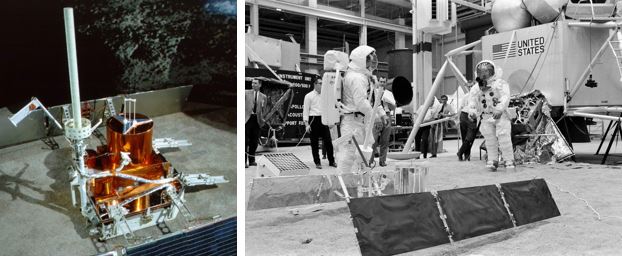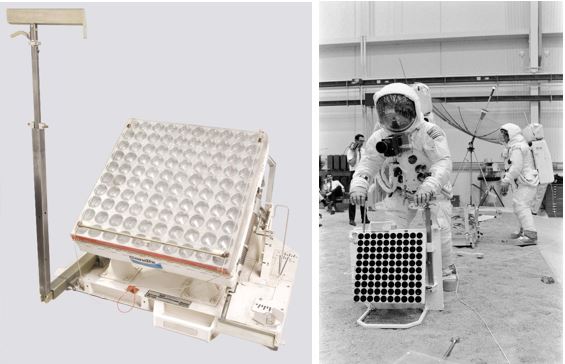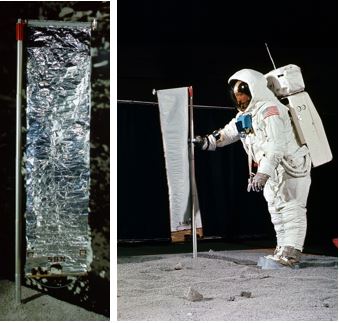The primary goal of the first Moon landing mission was to demonstrate that the Apollo spacecraft systems could safely land two astronauts on the surface and return them safely to Earth. During the first lunar surface Extravehicular Activity (EVA), the crew were to spend about two hours outside the Lunar Module (LM). In addition to collecting rock and soil samples for return to Earth, the astronauts would also conduct science. On November 19, 1968, NASA announced that when Apollo astronauts first land on the Moon, possibly as early as during the Apollo 11 mission in the summer of 1969, they would deploy three scientific experiments – a passive seismometer, a laser ranging retro-reflector, and a solar wind composition experiment.
The passive seismometer experiment was a self-contained 100-pound seismic station to detect any Moonquakes. The experiment was solar-powered and had its own communications capability so that it transmitted its results back to Earth after the astronauts departed the lunar surface. If the Moon is seismically active, the instrument could provide information about its internal structure and possibly yield clues about its formation. The Principal Investigator for this experiment was Gary Latham of Columbia University’s Lamont Geological Observatory in Palisades, New York.
The laser ranging retro-reflector was a passive experiment weighing about 70 pounds. It consisted of an array of precision optical reflectors to serve as a target for Earth-based lasers. By precisely measuring the time it takes a laser beam to travel from Earth and bounce back from the retro-reflector, scientists calculated the Earth-Moon distance to an accuracy of eight centimeters. Measurements taken over time and from different stations on Earth helped determine fluctuations in Earth’s rotation and also recorded continental drift. The Principal Investigators for the seismic experiment were Carroll Alley of the University of Maryland in College Park, Maryland, and Donald Eckhardt of the Air Force Cambridge Research Laboratory in Cambridge, Massachusetts.
The solar wind composition experiment consisted of a sheet of aluminum to trap particles of the solar wind, in particular the noble gases helium, neon, argon, krypton, and xenon. The astronauts unfurled the aluminum foil collector near the beginning of their EVA and then rolled it up and returned it to Earth for laboratory analysis. The Swiss government sponsored the one-pound experiment. The Principal Investigator was Johannes Geiss of the University of Bern in Switzerland.
During their flight from Earth, the experiments were stowed in the Scientific Equipment Bay of the LM’s Descent Stage. The crew manually retrieved the packages once on the lunar surface and deployed the experiments within 60 feet of the LM. Beginning with the second Moon landing, astronauts deployed more sophisticated experiments as part of the Apollo Lunar Surface Experiments Package (ALSEP) and conducted more extensive geological surveys around their landing sites.


























